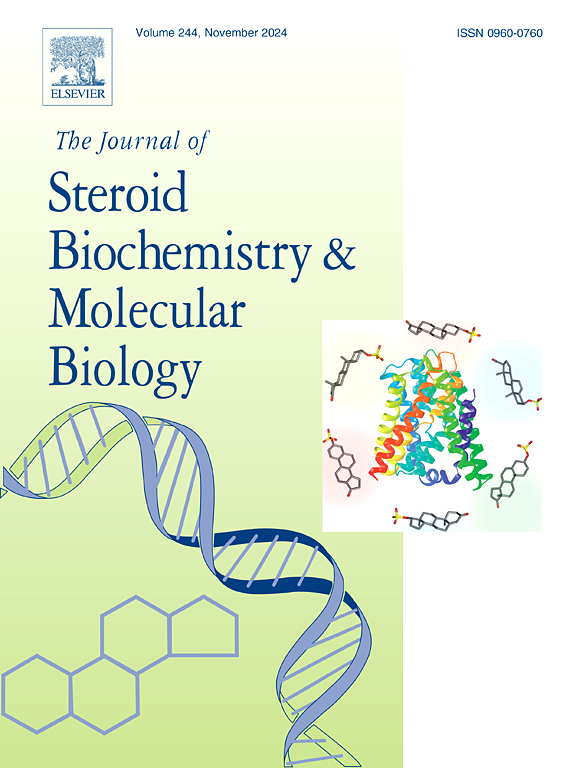Characterization of novel sialylation-associated microRNA signature for prognostic assessment in breast cancer and its implications for the tumor microenvironment
IF 2.7
2区 生物学
Q3 BIOCHEMISTRY & MOLECULAR BIOLOGY
Journal of Steroid Biochemistry and Molecular Biology
Pub Date : 2025-02-01
DOI:10.1016/j.jsbmb.2025.106683
引用次数: 0
Abstract
Sialylation, a key post-translational modification essential for protein function, is regulated by steroid hormones, along with other glycosylations like fucosylation. These modifications influence tumor growth and metastasis by modulating immune activation. MicroRNAs (miRNAs), crucial in gene expression, affect sialylation and are emerging as promising biomarkers in breast cancer, though their prognostic value remains unclear. Sialylation-related miRNAs were identified through Pearson correlation analysis, and an eight-miRNA risk signature was developed using univariate and Least Absolute Shrinkage and Selection Operator (LASSO) regression in the TCGA dataset. The prognostic value was validated in two independent GEO datasets. Multivariate analysis confirmed that the miRNA risk score is an independent predictor of overall survival (OS). A nomogram integrating clinical characteristics and the risk score was created to predict 1-, 3-, and 5-year OS, assessed through calibration curves, ROC curves, and area under the ROC curve (AUC). Biological pathways were explored using GSEA and GSVA, while immune infiltrates were identified through CIBERSORT and TIMER.
The eight-miRNA signature effectively predicted OS, recurrence-free survival, and disease-free survival. High-risk patients exhibited increased macrophage and neutrophil levels, indicative of a poor prognosis. High-risk patients, especially those with triple-negative breast cancer, had significantly worse outcomes. This risk score could inform personalized treatment strategies in breast cancer management.
求助全文
约1分钟内获得全文
求助全文
来源期刊
CiteScore
8.60
自引率
2.40%
发文量
113
审稿时长
46 days
期刊介绍:
The Journal of Steroid Biochemistry and Molecular Biology is devoted to new experimental and theoretical developments in areas related to steroids including vitamin D, lipids and their metabolomics. The Journal publishes a variety of contributions, including original articles, general and focused reviews, and rapid communications (brief articles of particular interest and clear novelty). Selected cutting-edge topics will be addressed in Special Issues managed by Guest Editors. Special Issues will contain both commissioned reviews and original research papers to provide comprehensive coverage of specific topics, and all submissions will undergo rigorous peer-review prior to publication.

 求助内容:
求助内容: 应助结果提醒方式:
应助结果提醒方式:


